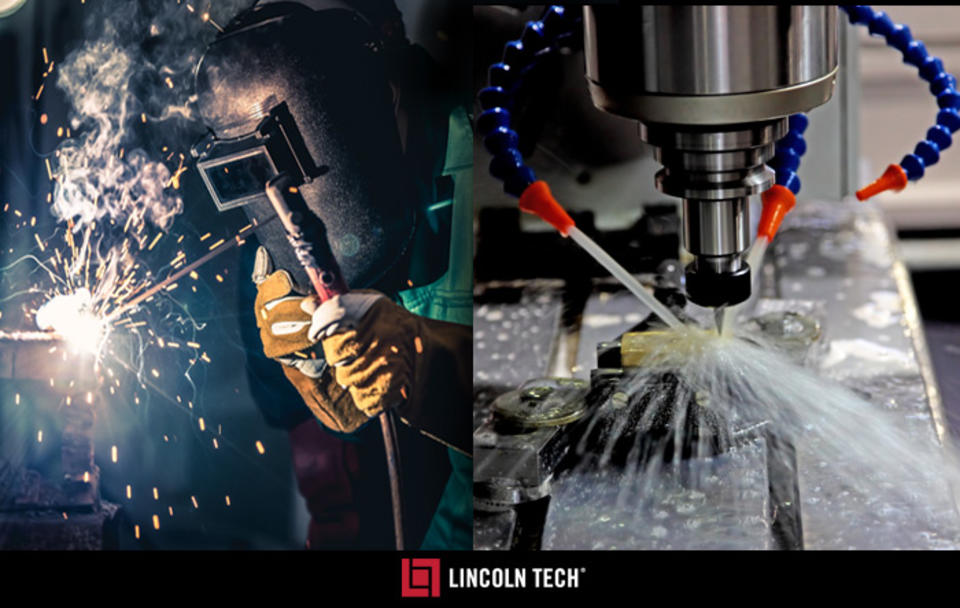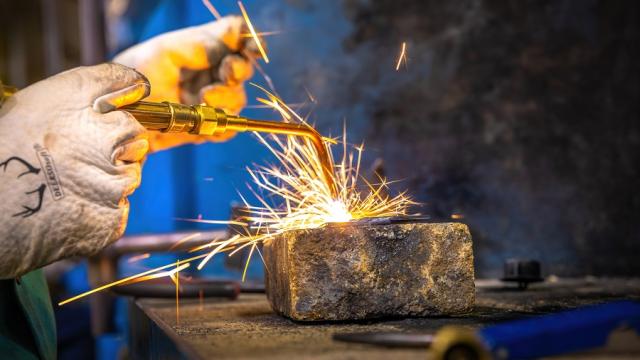Common Welding Repair Service Issues and Exactly How to Address Them Efficiently
Welding fixings typically run into a series of issues that can jeopardize the integrity of the end product. Typical issues include poor infiltration, porosity, and imbalance, amongst others. Each defect offers unique challenges that need certain strategies for resolution. Understanding these problems is necessary for welders intending to boost their results and abilities. This conversation will certainly explore these common welding repair issues and effective methods to resolve them.
Insufficient Penetration
Inadequate infiltration takes place when the weld steel fails to completely fuse with the base material, causing weak joints and potential architectural failures. This problem often stems from inadequate warmth input, incorrect electrode angle, or incorrect welding speed. Welders may experience insufficient penetration as a result of a mistake of the needed criteria for a specific product density or kind. Furthermore, contamination on the base product's surface area can hinder effective bonding, intensifying the problem. To attend to poor infiltration, welders ought to guarantee proper setups on their tools and maintain a clean work surface. Normal assessment of welds is suggested to identify any shortages early, enabling timely modifications and the avoidance of endangered structural stability in bonded settings up.
Porosity
Porosity is an usual defect in welded joints that manifests as tiny gas bubbles entraped within the weld steel. This issue can endanger the honesty of the weld, leading to decreased strength and possible failing under stress and anxiety. Montana Mobile Welding and Repair Fabrication. Porosity typically emerges from contamination, dampness, or incorrect welding strategies, which permit gases to leave into the liquified weld pool. To attend to porosity, welders should guarantee appropriate surface area preparation, keep a tidy workplace, and use ideal welding criteria. Additionally, selecting the best filler material and securing gas can mitigate gas entrapment. Normal inspection and screening of welds can assist recognize porosity early, ensuring prompt corrective activities are taken, therefore maintaining the top quality and reliability of the bonded structure
Misalignment
Misalignment in welding can emerge from different aspects, including improper configuration and thermal growth. Understanding the origin causes is essential for effective resolution. A number of modification techniques are readily available to realign components and guarantee structural stability.
Reasons for Imbalance
Welding imbalance typically originates from a variety of underlying problems that can endanger architectural integrity. One key cause is incorrect fit-up of elements before welding, which can bring about spaces and irregular surface areas. Variations in thermal growth during the welding procedure can additionally result in distortion, particularly if the products being signed up with have various coefficients of expansion. In addition, poor fixturing and clamping may fall short to hold elements firmly in position, bring about motion throughout welding. Inadequately kept equipment, including welding equipments and devices, may present incongruities in the weld grain, more adding to imbalance. Operator error, stemming from inadequate training or experience, can also play a significant duty in developing misaligned welds.

Adjustment Techniques Offered
Attending to imbalance effectively requires a mix of corrective methods customized to the specific problems available. One common technique is using fixtures or jigs to hold components in the correct position during welding, making sure constant alignment. In addition, preheating the materials can help in reducing distortion and improve fit-up. For substantial misalignment, mechanical realignment techniques, such as making use of hydraulic jacks or clamps, can be used to correct the setting prior to welding. Post-weld warm therapy may additionally be essential to relieve stress and anxieties triggered by imbalance. Mindful assessment and adjustment during the setup phase can avoid imbalance concerns from coming to be significant troubles, promoting a smoother welding process and boosting general architectural stability.
Distortion
Distortion is a typical difficulty in welding that can arise from different variables, consisting of irregular heating & cooling. Recognizing the reasons of distortion is crucial for applying efficient prevention methods. Addressing this concern not only improves structural stability but likewise improves the overall top quality of the weld.
Root causes of Distortion
When subjected to the extreme warm of welding, products frequently go through adjustments that can cause distortion. This phenomenon mainly occurs from thermal growth and tightening throughout the welding procedure. As the weld location warms up, the material expands; upon cooling, it contracts, which can produce interior stress and anxieties. On top of that, uneven home heating throughout a workpiece can intensify these stress and anxieties, resulting in warping or flexing. The sort of product likewise plays a substantial role; steels with differing thermal conductivity and coefficients of growth may react in different ways, causing unpredictable distortions. In addition, inadequate joint style and poor fixturing can add to imbalance throughout welding, increasing the likelihood of distortion. Understanding these causes is vital for efficient welding repair and avoidance techniques.
Avoidance Techniques
Reliable avoidance strategies for distortion throughout welding focus on regulating warm input and making certain correct joint design. Keeping a regular warmth input helps to minimize thermal expansion and tightening, which can bring about distortion. Utilizing techniques such as pre-heating the work surface can additionally decrease the temperature gradient, promoting consistent heating. Additionally, picking ideal joint designs, such as T-joints or lap joints, can improve security and decrease stress and anxiety focus. Executing appropriate fixturing to safeguard the workpieces in place even more help in keeping placement throughout the welding procedure. Finally, staggered welding series can distribute heat much more equally, stopping local distortion. By using these methods, welders can significantly decrease the probability of distortion and enhance the general quality of their welds.
Breaking
Breaking is an usual concern encountered in welding repair services, usually resulting from numerous variables such official statement as improper cooling prices, material selection, or insufficient joint prep work. The event of splits can significantly endanger the stability of the weld, bring about prospective failings throughout operation. To resolve this concern, welders need to first analyze the source, guaranteeing that materials work and appropriately picked for the particular application. Additionally, managing the cooling price during the welding procedure is essential; rapid air conditioning can generate stress and result in fracturing. Proper joint design and prep work additionally add to lessening the danger. Implementing these methods can improve weld quality and toughness, inevitably minimizing the probability of breaking in finished weldments.

Incomplete Combination
A significant issue in welding hop over to these guys repair services is insufficient fusion, which takes place when the weld metal does not appropriately bond with the base material or previous weld passes - Montana Mobile Welding and Repair Welding. This issue can result in weaknesses in the joint, potentially jeopardizing the honesty of the welded structure. Factors adding to insufficient blend consist of not enough warmth input, inappropriate welding method, and contamination of the surfaces being signed up with. To address this issue properly, welders should assure correct pre-weld cleaning and surface preparation, as well as change their welding specifications to attain ample penetration and blend. Routine inspection during the welding process can likewise aid identify incomplete fusion early, enabling for prompt rehabilitative steps to boost the overall quality of the weld
Overheating
While welding repair services can boost architectural stability, overheating offers a considerable difficulty that can lead to material degradation. Too much heat during welding can modify the mechanical properties of steels, leading to minimized stamina, boosted brittleness, and bending. This phenomenon is particularly important in high-stress applications where architectural integrity is paramount. Identifying getting too hot can entail visual inspections for staining or distortion, as well as monitoring temperature during the welding process. To alleviate the threats related to overheating, welders need to employ proper techniques, such as controlling warm input, readjusting traveling speed, and using suitable filler products. In addition, applying pre- and post-weld heat treatments can assist recover product homes and enhance the general high quality of the repair, making sure long-term performance and security.
Often Asked Inquiries
What Are the Common Indications of a Welding Issue?

How Can I Check My Welds for Quality?
To test welds for top quality, one can utilize visual evaluations, ultrasonic testing, and radiographic approaches. Each strategy guarantees architectural honesty, identifies defects, and verifies adherence to defined standards, eventually enhancing the integrity rutile electrode of the bonded joints.
What Security Preventative Measures Should I Take While Welding?
When welding, one need to prioritize safety and security by using appropriate individual protective equipment, guaranteeing proper air flow, securing flammable materials away, maintaining a clean office, and recognizing surroundings to stop injuries and mishaps.
Can I Fix a Weld Without Redoing the Entire Joint?
Fixing a weld without redoing the entire joint is feasible, depending on the damage (Fabrication). Strategies such as grinding, including filler material, or making use of a welding process can efficiently deal with details imperfections while protecting the bordering structure
What Devices Are Important for Reliable Welding Fixes?
Important devices for effective welding fixings consist of a welding equipment, cable brush, mill, protective equipment, clamps, and filler products. Each device plays an important role in making certain quality and safety and security throughout the fixing procedure. Porosity generally occurs from contamination, wetness, or incorrect welding techniques, which allow gases to leave right into the molten weld swimming pool. Improperly conserved devices, including welding equipments and devices, may introduce variances in the weld bead, additional adding to misalignment. When subjected to the intense warm of welding, products usually go through changes that can lead to distortion. Breaking is an usual problem come across in welding repair work, commonly resulting from various elements such as improper air conditioning rates, material option, or inadequate joint preparation. A significant concern in welding repairs is incomplete blend, which takes place when the weld steel does not properly bond with the base product or previous weld passes.